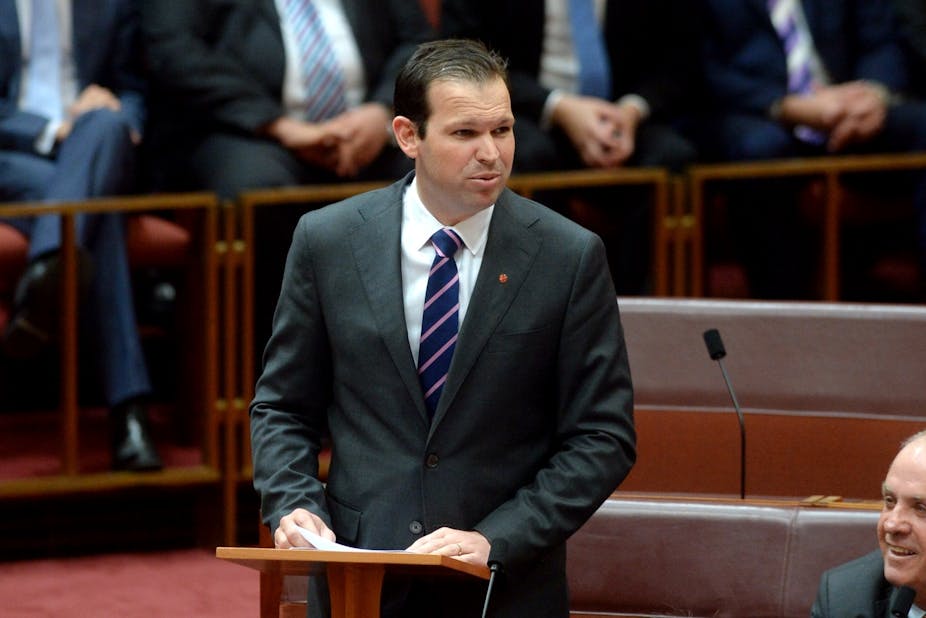With the budget squarely targeted at getting more mothers into work or working extra hours, a group of Coalition backbenchers is forming to fight for the interests of stay-at-home parents.
Its organisers are Queensland Nationals senator Matt Canavan and ACT Liberal senator Zed Seselja. It is likely to number about a dozen and will have its first meeting in the next few weeks when Parliament is sitting.
The move started after Canavan expressed concern about the budget’s proposed trade off between the A$3.5 billion child care package and the Senate passing big savings in family tax benefits (FTB). The Senate would not agree to the FTB savings last year and the measure is set to run into problems this year.
Seselja said he would like the group’s main aim to be seeking to influence next year’s budget and the tax white paper. The concern was “about ensuring single income families get the fairest deal possible in the tax and welfare mix”.
There was an impression in part of the community that too much emphasis was being put on getting mothers into work, he said.
“I don’t have a problem with encouraging people into work. But many families choose to have one parent at home for a significant period – they should not be left behind. I’m concerned to make sure they’re not.”
Seselja said the Howard government’s system of family tax benefits was an attempt to address the problem of single income families but these had been scaled back over time.
Canavan is lobbying to stop family tax benefit B (which goes to sole parents and couples who have one main income) being denied to those whose youngest child is six or over. He’s keeping open the option of crossing the floor on the issue. “I have deep concerns about whether I can support it,” he said. He has also been in touch with crossbenchers who want changes to the measure.
Canavan is also preparing a submission that he will put to the tax white paper inquiry, proposing a form of income sharing based on the recently introduced Canadian model. The Canadian government has combined extra help for child care with an income splitting scheme for families with children, allowing an eligible taxpayer to transfer a certain sum to their lower-earning spouse so it is taxed at a lower rate.
Income splitting has always been shied away from by federal governments, including by John Howard who was sympathetic to the cause of single income families.
Canavan said those promoting the interests of stay-at-home parents didn’t want them subsidised. They wanted their choice to be affordable in relative terms.
Conservative Liberal senator Cory Bernardi, who will be in the group, said he didn’t want to see stay-at-home parents disadvantaged more than they were now. “The most productive thing a parent can do it to spend time with their children.”
The balance appeared to have swung too far, Bernardi said. The taxpayer was increasingly subsidising care for children while the working parent also got the benefit of a tax free threshold.
Last week’s budget shows the estimated tax and government assistance for various types of families in 2015-16. A dual income couple (having a 70-30% income split) earning $80,000 with three children (one under six, two aged between six and thirteen) end up with $93,559 disposable income. A single income family with the same circumstances ends up with $85,497.
As the row over the government’s budget cutback to parental leave entitlements continued, Treasurer Joe Hockey made the improbable suggestion that the wives of ministers Mathias Cormann and Josh Frydenberg might have ‘double dipped’ into two schemes without their husbands knowing.
After condemning the present situation as a rort because it (legitimately) allows double dipping, the government was embarrassed when the ministers had to confess their wives had dipped twice.

